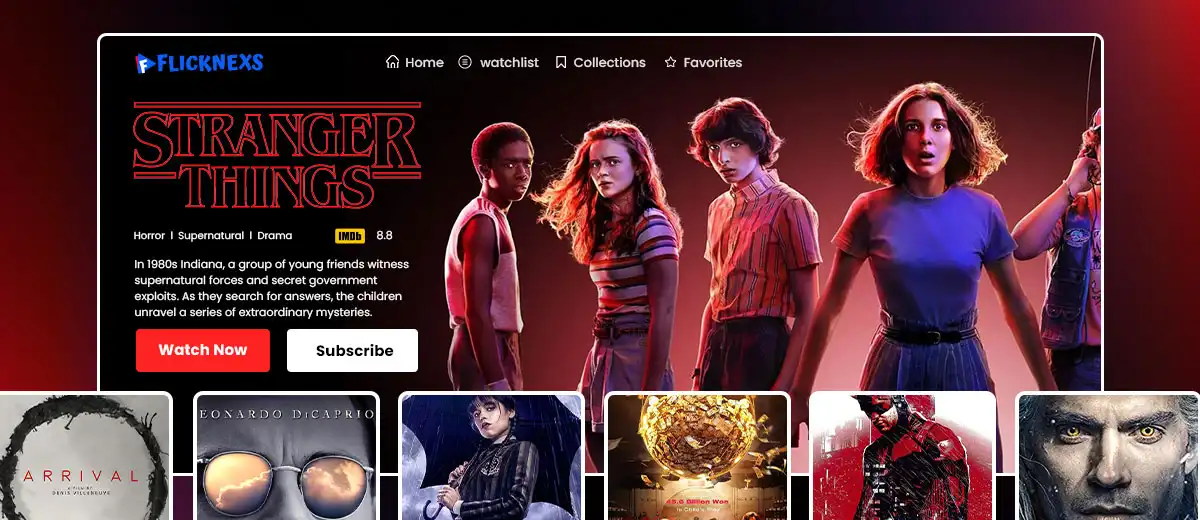Netflix has revolutionized the manner we watch movies and TV shows by providing a unbroken streaming experience. Behind the scenes, Netflix utilizes a sophisticated system to stream videos to millions of viewers worldwide. This creation will provide a top level view of ways Netflix streams motion pictures, highlighting the key components and techniques concerned in turning in extremely good content for your display. From encoding and transcoding to content delivery networks (CDNs) and adaptive streaming, Netflix’s video streaming infrastructure ensures a smooth and enjoyable viewing experience for its subscribers.
Understanding Video Streaming
- Video streaming involves the continuous transmission of video data over the internet.
- It enables users to watch videos in real-time without waiting for the entire file to download.
- Streaming allows users to start watching the video while it is being delivered.
- The video data is divided into smaller packets that are sent over the internet and reassembled for playback.
- Streaming protocols and codecs are used to facilitate the delivery and compression of video data.
- Platforms like Netflix utilize video streaming to provide on-demand video content to users.
- Video streaming offers a convenient and immediate viewing experience, accessible with an internet connection.
Netflix Streams: An Overview
Netflix has revolutionized the entertainment industry as a leading subscription-based streaming service. Netflix’s vast library provides a diverse range of movies, TV shows, and documentaries, offering content for varied tastes globally. With multi-device accessibility, users can enjoy their favorite content anytime, anywhere, reaching millions of subscribers worldwide.
Netflix’s personalized recommendation system enhances the viewing experience, offering tailored content based on user preferences, revolutionizing entertainment consumption worldwide. With its vast library and seamless streaming, Netflix has become an essential component of modern entertainment, providing unparalleled convenience and reshaping how we enjoy movies and TV shows.
The Technology Behind Netflix Streaming
Behind the scenes, Netflix relies on a combination of technologies to deliver a seamless streaming experience. Let’s explore some of the key technologies involved:
Content Delivery Network (CDN)
Netflix’s video streaming infrastructure is fortified by a robust Content Delivery Network (CDN), which comprises a distributed network of servers strategically positioned across the globe. These servers store and deliver content to users based on their geographic location. Netflix strategically places servers close to users to minimize data travel distance, ensuring faster content delivery and reducing buffering issues. This intelligent server distribution optimizes the streaming experience, allowing viewers to enjoy movies and TV shows without interruptions. The efficient content delivery network (CDN) based on geographic proximity enhances overall streaming performance, providing a seamless viewing experience regardless of user location.
Video Encoding and Compression
Netflix employs advanced video encoding and compression techniques, utilizing codecs like H.264 or VP9 to optimize file size without compromising quality. This ensures smooth streaming over different internet connections, maximizing efficiency and enhancing the viewing experience for subscribers.
Adaptive Streaming
Netflix enhances the viewing experience by utilizing adaptive streaming technology, dynamically adjusting video quality based on the user’s internet connection for smooth playback and uninterrupted streaming. This intelligent approach ensures optimal streaming regardless of network fluctuations, delivering a tailored experience to users.
Internet Connection
A stable and high-speed internet connection is crucial for streaming videos on popular platforms like Netflix. To ensure uninterrupted playback, Netflix recommends a minimum internet speed based on the desired video quality. Whether you’re using a wired connection or Wi-Fi, having a reliable internet connection is essential for enjoying a seamless streaming experience.
Devices and Platforms
Netflix is available on a wide range of devices and platforms, including smartphones, tablets, smart TVs, gaming consoles, and more. The platform optimizes its streaming technology for each device, ensuring compatibility and optimal performance across various hardware and software configurations.
READ MORE: OTT Solutions: The Ultimate Guide to Streaming Success
How Netflix Streams Videos
Now that we understand the underlying technologies, let’s explore the step-by-step process of how Netflix streams videos:
Step 1: Content Acquisition
Netflix acquires a diverse range of content from various sources, including licensing agreements with studios and networks, as well as producing their own original content. This acquired content is meticulously curated and stored in their expansive digital library, ensuring a vast selection of movies, TV shows, documentaries, and more, ready to be streamed and enjoyed by millions of users across the globe.
Step 2: Video Encoding
Once the content is acquired, Netflix employs advanced video encoding techniques to convert the video files into different formats and resolutions. This meticulous process optimizes the content for compatibility with a wide range of devices and accommodates varying internet speeds. By adapting the video files to different formats, bitrates, and resolutions, Netflix ensures that users can enjoy a seamless streaming experience tailored to their specific device capabilities and internet connectivity.
Step 3: Content Delivery
When a user selects a video to watch on Netflix, the content delivery network (CDN) plays a crucial role. Netflix’s CDN strategically locates the nearest server to the user, minimizing latency and optimizing delivery speed. It efficiently retrieves and delivers the requested video file, reducing buffering and ensuring a smooth streaming experience.
In addition, Netflix employs adaptive streaming ott technology, which dynamically adjusts the video quality based on the user’s internet connection. This intelligent system continuously monitors the available bandwidth and adjusts the streaming bitrate accordingly, optimizing playback and minimizing interruptions. By adapting the video quality in real-time, Netflix maintains a seamless viewing experience, even in the face of fluctuating network conditions, and ensures uninterrupted playback for users across a variety of devices and internet speeds.
The Importance of Optimization
- Encoding Optimization: Netflix employs advanced encoding techniques to compress video files without compromising quality. This optimization reduces the file size, enabling faster streaming and minimizing buffering.
- Adaptive Streaming: Netflix utilizes adaptive streaming technology, which dynamically adjusts video quality based on the viewer’s internet connection. It ensures smooth playback by automatically adapting to varying network conditions.
- Content Delivery Network (CDN): It operates a global network of servers strategically placed worldwide. This CDN infrastructure ensures that video content is delivered from the nearest server to the viewer, reducing latency and improving streaming performance.
- Caching: It implements caching mechanisms at various network points, such as internet service providers (ISPs) or local servers. Caching stores popular or frequently accessed content closer to viewers, reducing the distance the data needs to travel and improving streaming speed.
- Bandwidth Throttling: Netflix employs bandwidth throttling techniques to regulate data usage and optimize streaming performance. By adjusting the streaming bitrate based on available network bandwidth, it ensures a smooth viewing experience while minimizing data consumption.
Conclusion
In conclusion, Netflix has implemented a race, allowing them to access their favorite content without interruption. Ange of optimization strategies to ensure a seamless video streaming experience for its users. Through advanced encoding techniques, adaptive streaming technology, a global content delivery network, caching mechanisms, and bandwidth throttling, Netflix strives to minimize buffering, reduce data usage, and deliver high-quality videos efficiently. These optimizations collectively contribute to providing users with a smooth and enjoyable streaming experience.
Frequently Asked Questions
1. How Netflix streams videos?
Netflix streams videos through advanced techniques like encoding, compression, and adaptive streaming, ensuring seamless playback and an optimized viewing experience.
2. How does Netflix decide what content to recommend?
Netflix employs algorithms that analyze a user’s viewing history, preferences, and other factors to recommend relevant content. It takes into account factors like genre, actors, ratings, and user feedback to provide personalized recommendations.
3. Can I download Netflix videos to watch offline?
Yes, Netflix allows users to download select movies and TV shows for offline viewing. This feature is available on the Netflix app for mobile devices.
4. Does Netflix offer content in multiple languages?
Yes, Netflix offers a wide range of content in multiple languages. Users can select their preferred language for audio and subtitles in many titles.
5. Is it possible to cancel my Netflix subscription anytime?
Yes, Netflix allows users to cancel their subscription at any time. There are no long-term contracts, and you can easily manage your subscription settings through your account.



Leave a Reply